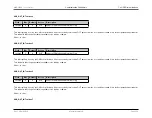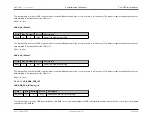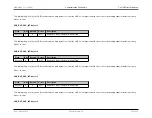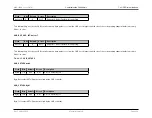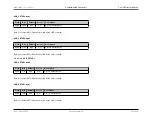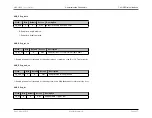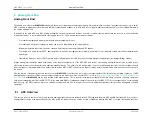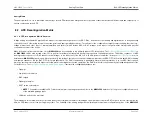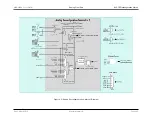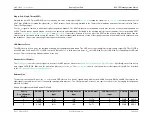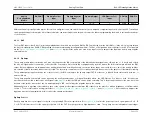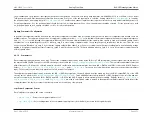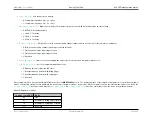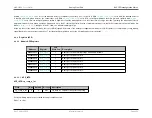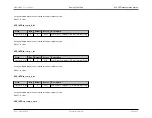
MAX32600 User’s Guide
Analog Front End
8
Analog Front End
Analog Front End
The analog front end on the
MAX32600
includes a wide variety of input and output peripherals and blocks which allow sensing of input analog voltages (e.g., with the
ADC or analog-to-digital converter block) and driving of output analog voltages (e.g., with the DAC or digital-to-analog output channels) to connect digital firmware to
the outside analog world.
In addition to the main ADC and DAC analog peripherals, the analog front end includes a variety of smaller function blocks that can be used in either dedicated
(standalone) modes or in combination with other analog functions. These analog function blocks include:
• Four operational amplifier (op amp) blocks with built-in comparator modes
• Four dedicated low-power comparators which can be used in parallel with the op amp blocks
• Internal temperature sensor which can be scanned by internally connecting it with an ADC channel
• Four single-pole-single-throw (SPST) analog switches which can be toggled either manually by firmware or automatically using a preconfigured digital pulse
train output
• Optical drive modes on pairs of GPIO port pin pads to allow high-current LED drive options using different configurations (including H-Bridge options)
A large analog interconnection matrix allows many of the input and output ports of the ADC, DAC and various other analog and digital blocks to be rerouted to each
other using internal connection points and analog multiplexer blocks. This allows for the configuration of more complex analog functions (such as voltage followers
and other types of internal amplifiers and buffers) which include ADC or DAC voltages as an input or output, without having to add physical connections external to
the device.
One key feature of the analog front end functions on the
MAX32600
is that they can be set up to run largely without CPU intervention, allowing sequences of ADC
readings and/or sequences of DAC channel output voltages to run while the main Cortex-M3 CPU core is in a
. The
on the
MAX32600
can be used instead of the higher-power CPU to perform tasks that must take place during a long sequence of analog operations,
such as unloading samples from the ADC FIFO to the main data RAM or loading new sample sequences into the DAC FIFO for output generation. Certain analog
functions (e.g., the ADC) require a low-noise environment with the main CPU in sleep mode in order to attain the highest possible precision during data collection
operations.
8.1
AFE Overview
This section covers a number of blocks and smaller analog peripherals that are included in the AFE along with the main ADC and DAC peripherals. Some of these
analog features can be used independently of the ADC and DAC, while others can only be used in combination with the ADC/DAC or certain other analog functions.
Rev.1.3 April 2015
Maxim Integrated
Page 340
Содержание MAX32600
Страница 1: ...MAX32600 User s Guide April 2015...

